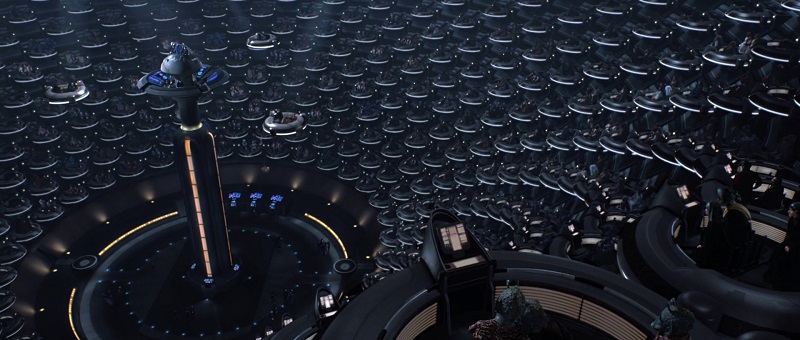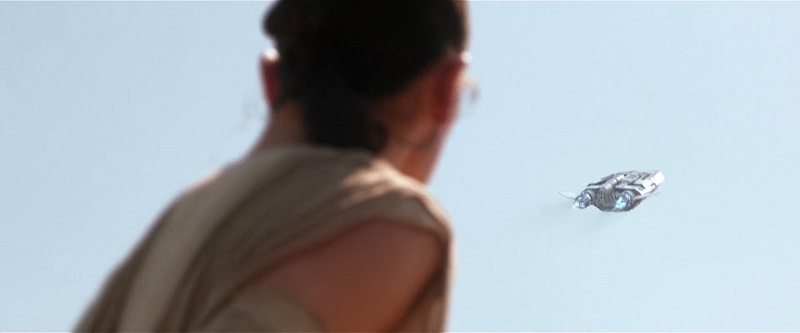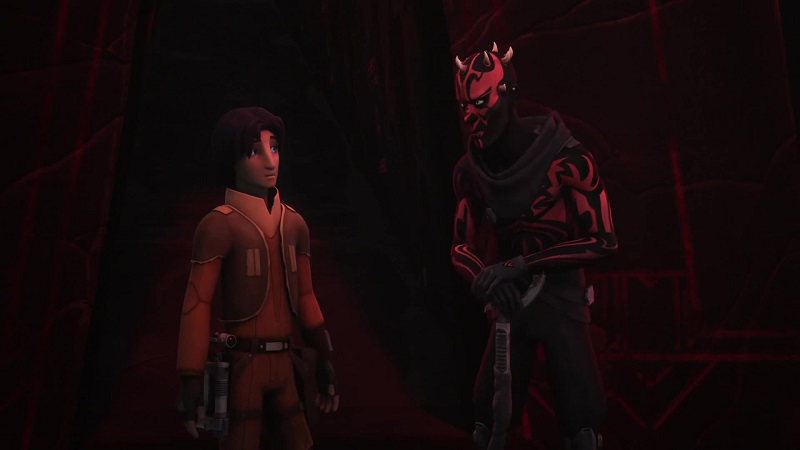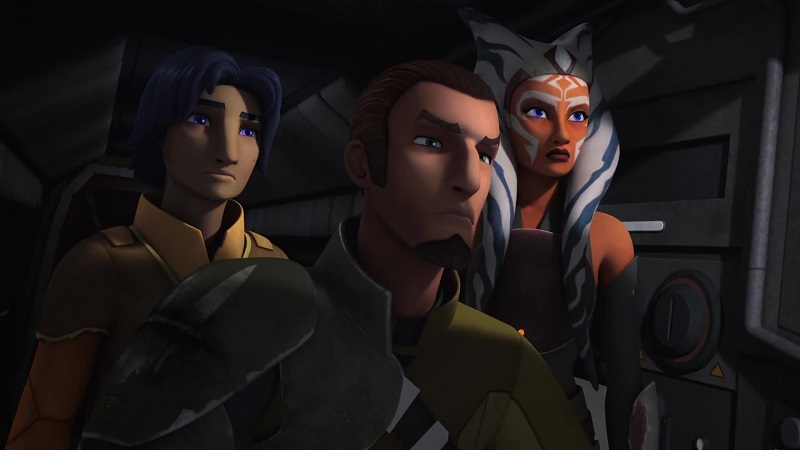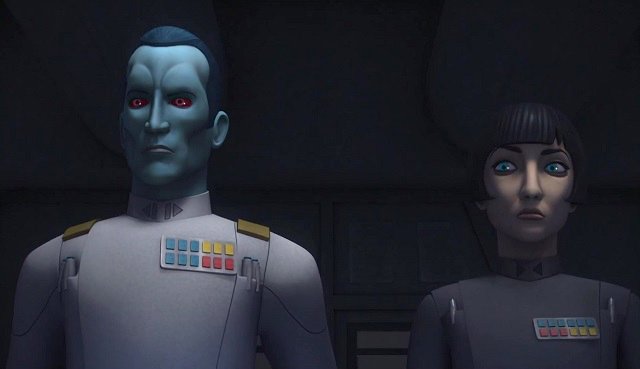
Jay: The season three premiere of Star Wars Rebels was an interesting departure from the series norm. I’ve already heard a few people observe that it was less intense — both emotionally and in terms of action — than the opener of the last season, and I agree. I also think that’s a good thing: the story development reasons that required “The Siege of Lothal” to be a very harrowing experience for the characters militate a very different sort of development for the season three opener. That said, I don’t think the character experiences are any less intense just because their engagement with the villains was.
Vader loomed large over “The Siege of Lothal”. He had to — he’s Darth Vader. But more than that, he escalated and changed the stakes in a show where the Ghost crew — even facing the Grand Inquisitor and Grand Moff Tarkin — had a fairly easy time of it. He also drove the crew off of Lothal in a convincing fashion. These were all important for story reasons: it wasn’t just that Vader’s presence demanded that the heroes become overwhelmed, but that they needed an impetus to change the pace of the show and change its setting. “Siege” was exactly what the show needed, and it shocked the audience in all the right ways just as it provided the characters a great shock and opportunity for growth.
“Steps Into Shadow” was different. For one thing, it would be a little unconvincing if Thrawn were to show up and 1) be defeated or 2) defeat the Ghost crew but be prevented from finishing them off. Instead, his presence was slow and methodical — he made himself known as a threat, but in that very deliberate and methodical way that Thrawn does. As Dave Filoni pointed out in an interview, Thrawn is very different from someone like Tarkin (or the other villains that the Ghost crew has faced) — Thrawn is not a politician and he doesn’t have a need to show immediate results. He’s after the bigger picture. That alone makes him terrifying — the finality with which he dismissed the entire Phoenix force by saying, “that is not the Rebel fleet,” says it all. He’s playing to win, and that will take time. Read More
